Home>Interior Design>Front Yard Flower Bed Ideas: 15 Low-maintenance Ways To Add Florals
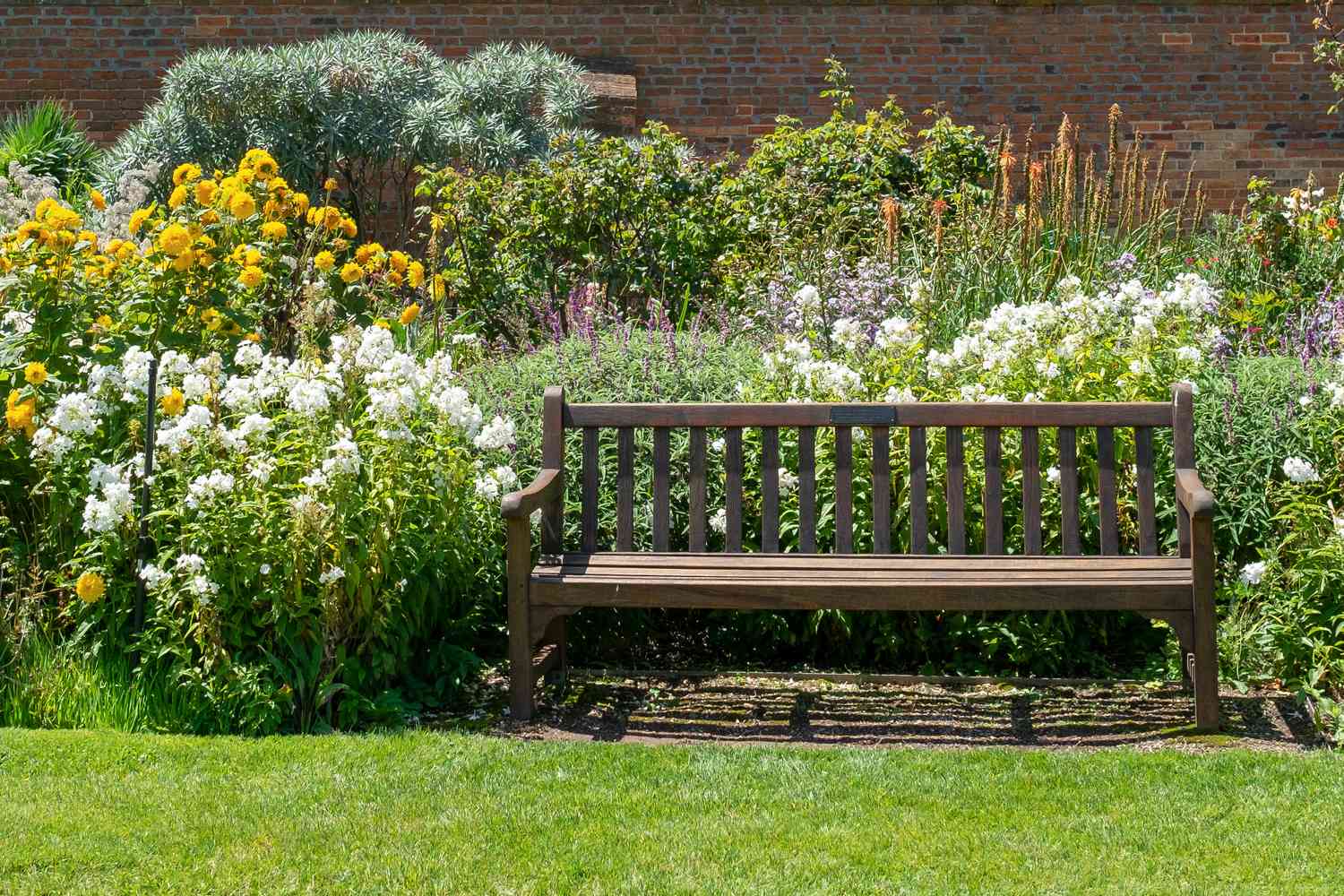

Interior Design
Front Yard Flower Bed Ideas: 15 Low-maintenance Ways To Add Florals
Modified: October 21, 2024
Looking for low-maintenance front yard flower bed ideas? Discover 15 interior-design-inspired ways to add beautiful florals to your outdoor space.
(Many of the links in this article redirect to a specific reviewed product. Your purchase of these products through affiliate links helps to generate commission for Storables.com, at no extra cost. Learn more)
Front Yard Flower Bed Ideas: 15 Low-Maintenance Ways to Add Florals
Adding a flower bed to your front yard is a great way to enhance the beauty and charm of your home. Not only do flower beds add vibrant colors and textures, but they also bring life to your outdoor space. However, many homeowners shy away from creating flower beds due to concerns about maintenance. The good news is that it’s possible to have a stunning front yard flower bed that requires minimal upkeep. Here are 15 low-maintenance ideas to incorporate florals into your landscape:
1. Incorporating Perennials for Long-Lasting Beauty: Choose perennial flowers like lavender, daylilies, and salvia. These plants come back year after year, reducing the need for replanting.
2. Creating a Colorful Wildflower Meadow: Plant a mix of native wildflowers that require little water and maintenance. This will attract pollinators while adding a natural and effortless look to your front yard.
3. Using Drought-Tolerant Plants for Minimal Watering: Opt for plants that thrive in dry conditions, such as succulents, yucca, and ornamental grasses. They require less watering and are hardy enough to withstand hot summers.
4. Designing a Low-Maintenance Succulent Garden: Succulents are not only visually appealing but also incredibly low-maintenance. They store water in their leaves, reducing the frequency of watering and maintenance.
5. Enhancing the Beauty with Ornamental Grasses: Planting ornamental grasses adds height, texture, and movement to your flower bed. They require minimal pruning and can withstand various weather conditions.
6. Implementing a Rock Garden with Delicate Flowers: Combine rocks and boulders with delicate flowers like crevices in between. This creates a unique and low-maintenance flower bed that requires little maintenance.
7. Utilizing Raised Flower Beds for Easy Maintenance: Raised flower beds not only add visual interest but also make gardening more accessible. They require less bending and kneeling, making it easier to tend to your plants.
8. Adding a Vertical Flower Bed for Limited Space: If you have limited space in your front yard, consider a vertical flower bed. Install a trellis or use hanging pots to grow climbing flowers and vines.
9. Installing Flowering Shrubs for Year-Round Appeal: Choose flowering shrubs like hydrangeas, azaleas, or roses. These plants offer beautiful blooms throughout the year while requiring minimal care.
10. Using Ground Covers as an Alternative to Grass: Ground covers like creeping thyme or moss provide a low-maintenance option instead of traditional grass. They require less mowing, watering, and upkeep.
11. Creating a Rustic Cottage Garden Look: Embrace a whimsical and charming look by incorporating a mix of cottage garden flowers. Choose hardy varieties like daisies, coneflowers, and asters that require less maintenance.
12. Incorporating Native Plants for Easy Adaptation: Native plants are well-suited to their natural environment, making them low-maintenance choices for your front yard flower bed. They are adapted to the local climate and require less water and care.
13. Adding Fragrant Flowers for a Sensory Experience: Consider including fragrant flowers like roses, lavender, or jasmine. These flowers not only add visual appeal but also enhance your outdoor space with delightful scents.
14. Designing a Butterfly and Bee-Friendly Flower Bed: Create an eco-friendly and low-maintenance flower bed by choosing plants that attract butterflies and bees. Include milkweed, bee balm, and coneflowers to support pollinators.
15. Creating a Low-Maintenance Floral Border with Perennials: Plant a border of low-maintenance perennials like hostas, geraniums, or sedum. These plants require minimal care and create a defined and tidy look for your flower bed.
Adding a flower bed to your front yard doesn’t have to be a high-maintenance endeavor. With these low-maintenance ideas, you can enjoy the beauty of florals without constant upkeep. Choose plants that are well-suited to your climate and gardening preferences, and you’ll have a stunning front yard flower bed that brings joy year after year.
Key Takeaways:
- Embrace the beauty of low-maintenance perennials in your front yard floral border. With strategic planning and minimal upkeep, enjoy vibrant blooms from spring to fall, creating a stunning and effortless landscape.
- Create a welcoming habitat for butterflies and bees in your front yard with fragrant flowers and native plants. Support local pollinators while enjoying the enchanting scents and vibrant colors of a sustainable and eco-friendly garden.
Incorporating Perennials for Long-Lasting Beauty
When it comes to creating a low-maintenance front yard flower bed, incorporating perennials is a must. Perennials are plants that come back year after year, eliminating the need for constant replanting. Not only do they provide long-lasting beauty, but they also offer a variety of colors, textures, and sizes to enhance the visual appeal of your outdoor space.
One of the key advantages of using perennials in your flower bed is the minimal effort required for maintenance. Unlike annuals that need to be replaced every year, perennials have a longer lifespan, making them an excellent investment for your garden. Once planted, they establish deep roots that help them survive through different seasons and weather conditions.
To choose the right perennials for your front yard flower bed, consider factors such as sunlight, water requirements, and soil conditions. Some popular and low-maintenance perennial options include lavender, daylilies, salvia, and coneflowers.
Lavender is a versatile perennial known for its fragrant blooms and silver-green foliage. It thrives in full sun, requires minimal watering, and is highly resistant to pests and diseases. Lavender is also known to attract pollinators like bees and butterflies, adding both beauty and ecological benefits to your garden.
Daylilies are another excellent choice for a low-maintenance flower bed. Available in a wide range of colors, daylilies are known for their stunning blooms that last for a day. These perennials are hardy, adaptable, and can tolerate a variety of growing conditions. They also require minimal watering and are quite resistant to pests and diseases.
Salvia is a perennial herb that offers vibrant flower spikes in various shades of blue, purple, pink, or red. It requires full sun and well-draining soil, making it a great choice for a low-maintenance flower bed. Salvia is drought-tolerant, attracts pollinators, and has a long blooming period, adding color and interest throughout the summer.
Coneflowers, also known as echinaceas, are hardy and low-maintenance perennials that can survive in challenging conditions. They come in a range of colors, from classic purple to bright orange, and attract pollinators like bees and butterflies. Coneflowers tolerate drought and require minimal watering once established, making them an ideal choice for a low-maintenance front yard flower bed.
When designing your flower bed, consider mixing different types of perennials to create a dynamic and visually appealing display. Combine plants with varying heights, textures, and bloom times to ensure year-round interest and color. Grouping similar plants together can create a more harmonious and cohesive look.
Incorporating perennials into your front yard flower bed not only reduces the need for frequent replanting but also offers long-lasting beauty with minimal maintenance. By choosing the right perennials for your growing conditions and design preferences, you can enjoy a stunning and low-maintenance flower bed that brings joy and colors to your outdoor space for years to come.
Creating a Colorful Wildflower Meadow
If you’re looking to add a natural and effortless look to your front yard flower bed while minimizing maintenance, consider creating a colorful wildflower meadow. Wildflowers not only provide a burst of vibrant colors but also attract beneficial pollinators like bees and butterflies, contributing to the overall health and biodiversity of your garden.
To create a beautiful and low-maintenance wildflower meadow, follow these steps:
1. Choose Native Wildflowers: Select native wildflowers that are well-adapted to your local climate and soil conditions. Native plants are more likely to thrive, requiring less maintenance and water. Some popular native wildflowers include Black-eyed Susans, California Poppies, Coreopsis, and Purple Coneflowers.
2. Prepare the Soil: Before sowing your wildflower seeds, it’s crucial to prepare the soil properly. Clear the area of any existing vegetation and weeds, then loosen the soil using a rake or garden fork. Remove large rocks and debris to create a smooth planting surface.
3. Sow the Seeds: Scatter the wildflower seeds evenly across the prepared area. You can mix the seeds with sand or vermiculite to help distribute them more evenly. Avoid burying the seeds too deep; lightly press them into the soil surface to ensure good seed-to-soil contact.
4. Water and Mulch: After sowing the seeds, water the area gently to moisten the soil. Be careful not to overwater, as this can lead to seed displacement. To suppress weeds and retain moisture, mulch the area lightly with straw or shredded leaves.
5. Provide Adequate Sunlight: Most wildflowers thrive in sunny locations, so choose an area in your front yard that receives full sun for at least six to eight hours per day. Avoid planting near trees or other structures that may shade the area.
6. Keep the Area Weed-Free: In the first few months, it’s important to keep the wildflower meadow weed-free. Hand-pull any emerging weeds to avoid competition for nutrients and space. As the wildflowers grow and fill in, they will help suppress weed growth.
7. Minimal Watering: Once the wildflower meadow is established, it generally requires minimal watering. Native wildflowers are adapted to local conditions and can tolerate periods of drought. Water only during extended dry spells or in the early stages of establishment.
8. Allow for Natural Seed Dispersal: As the wildflowers bloom and mature, they will produce seeds for future growth. Allow the flowers to go to seed and naturally disperse in the area. This will encourage the natural reseeding of the meadow, enhancing the diversity and beauty over time.
Creating a colorful wildflower meadow in your front yard not only adds a stunning visual display but also supports local pollinators and wildlife. It offers a low-maintenance way to bring a touch of nature to your outdoor space. Embrace the beauty of wildflowers and enjoy the changing colors and biodiversity that they bring to your garden.
Using Drought-Tolerant Plants for Minimal Watering
If conserving water and minimizing maintenance are top priorities for your front yard flower bed, incorporating drought-tolerant plants is an excellent choice. These plants are adapted to thrive in arid conditions and require minimal watering once established. By choosing drought-tolerant plants, you can have a beautiful and vibrant flower bed while reducing your water usage and maintenance tasks.
Here are some tips for using drought-tolerant plants in your front yard flower bed:
1. Choose the Right Plants: Select plants that are well-suited to your climate and growing conditions. Look for species that are naturally adapted to arid or dry environments. Some popular drought-tolerant options include succulents, cacti, lavenders, yuccas, and ornamental grasses.
2. Consider Xeriscaping: Xeriscaping is a landscaping technique that focuses on water conservation. It involves using native and drought-tolerant plants, mulching, and efficient irrigation methods. Incorporating xeriscaping principles in your flower bed can significantly reduce water usage and maintenance needs.
3. Improve Soil Drainage: Ensure that your flower bed has well-draining soil to prevent waterlogging and root rot. Amend the soil with organic matter such as compost to improve its texture and drainage capabilities. This will help the plants handle dry periods more effectively.
4. Water Wisely: During the establishment phase, newly planted drought-tolerant plants may require regular watering until their roots become established. Water deeply but infrequently to encourage deep root growth and drought resistance. Once established, these plants can usually thrive with less frequent watering.
5. Mulch for Moisture Retention: Apply a layer of organic mulch around your plants to help retain moisture in the soil. Mulching helps reduce evaporation, suppress weeds, and maintain more consistent soil temperatures. Use materials like wood chips, straw, or shredded leaves as mulch.
6. Group Plants by Water Needs: Group plants with similar water requirements together in your flower bed. This ensures more efficient watering and prevents overwatering or underwatering different species. Cluster drought-tolerant plants together, while separate more water-demanding plants in a different area.
7. Minimize Lawn Area: Consider reducing the size of your lawn in favor of more drought-tolerant plants. Lawns require regular watering and mowing, which can be time-consuming and wasteful. By incorporating more water-wise plants, you can create a more sustainable and low-maintenance front yard.
8. Regular Maintenance: Although drought-tolerant plants require less water, they still benefit from regular maintenance. Remove any dead or diseased leaves and spent flowers to promote healthy growth. Prune as needed to maintain the desired shape and size of the plants.
By incorporating drought-tolerant plants in your front yard flower bed, you can enjoy a beautiful and vibrant landscape while conserving water and minimizing maintenance. These plants are not only visually appealing but also well-adapted to survive in dry and arid conditions. Embrace the beauty of these resilient plants and create a sustainable and low-maintenance floral display in your front yard.
Designing a Low-Maintenance Succulent Garden
If you’re searching for a stylish and low-maintenance option for your front yard flower bed, consider designing a succulent garden. Succulents are known for their unique and eye-catching shapes, textures, and colors, making them a popular choice for contemporary and desert-inspired landscapes. Not only are they visually appealing, but they also require minimal irrigation and maintenance.
Here are some tips for designing a low-maintenance succulent garden:
1. Choose a Sunny Location: Succulents thrive in sunny locations, so select a spot in your front yard that receives at least six hours of direct sunlight per day. Ensure that there are no shade structures or large trees that may cast shade on the area.
2. Prepare the Soil: Succulents prefer well-draining soil to prevent root rot. To improve drainage, amend the soil with perlite, pumice, or coarse sand. Avoid using heavy clay or compacted soil, as this can lead to moisture retention and cause the roots to rot.
3. Select a Variety of Succulents: There is a wide range of succulent varieties available, each with its unique shape, size, and color. Choose a mix of succulents to add visual interest to your garden. Some popular options include Echeveria, Aloe, Sedum, Agave, and Sempervivum.
4. Arrange Succulents in Groups: Group succulents together based on their water and light requirements. This makes watering easier and more efficient. Consider using containers or planters to create clusters of succulents, allowing for easier maintenance and repositioning.
5. Add Decorative Rocks or Gravel: Enhance the aesthetic appeal of your succulent garden by adding a layer of decorative rocks or gravel around the plants. This not only adds a finishing touch to the design but also helps keep the soil cool and prevents weed growth.
6. Water Sparingly: Succulents are known for their ability to store water in their leaves, stems, or roots. As a result, they have low water requirements. Water your succulents thoroughly but infrequently, allowing the soil to dry out between watering sessions. Overwatering can lead to root rot and other issues.
7. Mulch with Pebbles or Gravel: To conserve moisture and prevent weed growth, mulch the soil surface around your succulents with pebbles or gravel. This also helps prevent soil erosion and keeps the garden looking neat and tidy.
8. Minimal Pruning: Succulents generally require minimal pruning. Remove any dead or damaged leaves as needed, and trim back any overgrowth to maintain the desired shape and size of the plants. Be cautious not to over-prune, as this can lead to stress or damage.
9. Protect from Frost: If you live in an area with frost or cold temperatures, consider protecting your succulents during the winter months. Move potted succulents indoors or cover outdoor plants with a cloth or frost blanket to prevent damage.
Designing a low-maintenance succulent garden in your front yard offers a modern and eye-catching aesthetic while reducing maintenance efforts. With their ability to store water, succulents are ideal for water-wise landscaping. Embrace the beauty and resilience of these unique plants and create a stunning succulent garden that adds a touch of elegance to your outdoor space.
Enhancing the Beauty with Ornamental Grasses
When it comes to adding texture, movement, and low-maintenance beauty to your front yard flower bed, ornamental grasses are an excellent choice. These versatile plants offer a range of colors, heights, and forms, adding visual interest and elegance to your landscape. Whether you’re going for a contemporary or natural-looking garden, incorporating ornamental grasses can elevate the overall appeal of your outdoor space.
Here are some tips for enhancing the beauty of your front yard flower bed with ornamental grasses:
1. Select the Right Grasses: Choose grasses that are well-suited to your climate, soil conditions, and desired aesthetic. Some popular options include Fountain Grass (Pennisetum), Feather Reed Grass (Calamagrostis), Switchgrass (Panicum), and Blue Fescue (Festuca).
2. Consider Height and Form: Ornamental grasses come in various heights and forms. Select grasses that complement the overall design and scale of your flower bed. Taller grasses, like Miscanthus, make excellent background plants, while shorter grasses, like Blue Oat Grass, can be used as edging or border plants.
3. Mix Grasses with Other Plants: Create a dynamic and visually appealing display by combining ornamental grasses with other plants in your flower bed. Pair grasses with perennials, annuals, or shrubs that have complementary colors and textures. This contrast will enhance the overall beauty of your garden.
4. Consider Color and Texture: Grasses offer a wide range of colors, from vibrant greens to golden hues and even variegated foliage. Choose grasses with colors that will provide visual interest and complement the surrounding plants. Consider the texture of the grass blades as well, opting for soft, feathery grasses or spiky, upright varieties, depending on the desired effect.
5. Ensure Proper Spacing: When planting ornamental grasses, provide enough space for their mature size. Avoid overcrowding, as this can lead to competition for resources and a crowded appearance. Refer to the specific spacing requirements for each grass variety to ensure optimal growth and visual impact.
6. Low Watering Requirements: Ornamental grasses are generally drought-tolerant once established. They have low water requirements and can thrive in dry conditions. This makes them a great choice for low-maintenance landscaping. However, ensure regular watering during the establishment phase to help the grasses develop strong root systems.
7. Minimal Pruning: Ornamental grasses require minimal pruning compared to other plants. In late winter or early spring, before new growth emerges, trim the dead or damaged foliage of grasses to maintain a neat appearance. Some grasses benefit from cutting back to the ground, while others may only require a light trim.
8. Provide Adequate Sunlight: Most ornamental grasses thrive in full sun conditions. Ensure that your flower bed receives at least six hours of direct sunlight per day. Avoid planting grasses in shady areas, as they may become leggy and less vibrant in color.
9. Winter Interest: Many ornamental grasses provide year-round interest, even in winter. They add texture and movement to your garden when other plants may be dormant or have lost their leaves. Leave the dried grasses intact during the winter months to create visual interest and provide shelter for birds and wildlife.
By incorporating ornamental grasses into your front yard flower bed, you can enhance the beauty and create a more dynamic and low-maintenance landscape. These resilient plants offer texture, movement, and visual interest year-round, adding an element of elegance and grace to your outdoor space. Embrace the versatility of ornamental grasses and enjoy the effortless beauty they bring to your garden.
Implementing a Rock Garden with Delicate Flowers
If you’re looking to create a unique and low-maintenance front yard flower bed, consider implementing a rock garden with delicate flowers. Rock gardens combine the beauty of various rocks and stones with delicate, low-growing flowers, creating a visually stunning and environmentally friendly landscape. They offer a natural and organic look that requires minimal maintenance while adding texture and interest to your outdoor space.
Here are some tips for implementing a rock garden with delicate flowers:
1. Choose the Right Rocks: Select rocks that are appropriate for your desired look and that complement the overall design of your front yard. Opt for rocks with different sizes, shapes, and colors to create a visually appealing display. Consider using local rocks or stones that blend well with the natural surroundings.
2. Plan for Drainage: Rock gardens require proper drainage to prevent water buildup and root rot. Ensure that the soil beneath your rocks is well-draining. This can be achieved by creating a slope or incorporating gravel or sand beneath the rocks to facilitate drainage.
3. Select Delicate Flowering Plants: Choose delicate and low-growing flowers that complement the rocks and thrive in your local climate. Some excellent options for a rock garden include Alpine Forget-Me-Nots, Silver Mound Artemisia, Creeping Thyme, Baby’s Breath, and Alpine Poppies. These plants add a touch of color and softness to the rugged rock landscape.
4. Consider Light and Water Requirements: Take into account the light and water requirements of your chosen plants. Ensure that your rock garden receives the appropriate amount of sunlight for the flowers to flourish. Also, consider the water needs of each plant and group them accordingly based on their preferences. This will make maintenance and watering more efficient.
5. Planting Technique: Carefully place your delicate flowers between the rocks, ensuring that they have enough space to grow and spread. Amending the soil with compost or suitable organic matter before planting will help provide essential nutrients. Ensure that the roots are well-covered and establish good contact with the soil.
6. Mulch with Gravel: Mulching with small gravel between the rocks helps to retain moisture and suppress weed growth. It also complements the natural rock aesthetic. Spread a layer of gravel throughout the rock garden, being mindful not to bury the delicate flowers.
7. Minimal Watering: Once established, the delicate flowers in your rock garden should require minimal watering. These plants are often adapted to thrive in challenging conditions and can tolerate periods of dryness. Water sparingly and only when necessary to avoid overwatering.
8. Regular Maintenance: As with any garden, regular maintenance is still required even in a rock garden. Remove any dead foliage, spent flowers, or weeds. Prune back plants as needed to maintain their shape and prevent overcrowding. Be sure to handle delicate flowers with care while conducting maintenance tasks.
9. Create an Eye-Catching Layout: Arrange the rocks and delicate flowers in an aesthetically pleasing layout. Consider varying the heights, creating contrast in colors and textures, and utilizing different rock sizes and shapes. This will add depth and visual interest to your rock garden.
Implementing a rock garden with delicate flowers in your front yard offers a unique and captivating landscape. Incorporating the beauty of rocks with the softness of delicate flowers creates a harmonious balance that requires minimal maintenance. Embrace the natural charm of a rock garden and enjoy the visual appeal it brings to your outdoor space.
Utilizing Raised Flower Beds for Easy Maintenance
Raised flower beds are a great solution for creating a low-maintenance front yard flower bed that is both visually appealing and easy to maintain. By elevating your flower bed, you not only add a decorative element to your outdoor space but also make gardening more accessible and convenient. Raised beds provide better soil drainage, reduce weed growth, and allow for easier plant care. Here are some tips for utilizing raised flower beds for easy maintenance:
1. Choose the Right Location: Select a suitable location in your front yard for your raised flower bed. Ensure that it receives adequate sunlight for the types of plants you plan to grow. Consider factors such as proximity to trees or buildings that may provide shade or block rainwater.
2. Design and Build: Decide on the dimensions and shape of your raised flower bed. You can use a variety of materials, such as wood, stone, bricks, or even recycled materials, to construct the walls of the raised bed. Make sure the construction is sturdy and level.
3. Soil Preparation: Before filling the raised bed with soil, ensure good drainage by layering the bottom with small rocks or gravel. Then, fill the bed with a quality soil mix. Amend the soil with compost or organic matter to improve fertility and the overall health of your plants.
4. Choose Low-Maintenance Plants: Select plants that are known for being low-maintenance and suited to your local climate. Consider using perennials, native plants, or even herbs that require minimal care and can thrive in the conditions of your raised bed. This will help reduce the need for constant replanting and watering.
5. Group Plants strategically: Arrange your plants in groups based on their water and light requirements. By grouping plants with similar needs together, you can provide targeted care more easily. This ensures that each plant receives the necessary attention without wasting resources.
6. Mulch and Weed Control: Apply a layer of organic mulch, such as wood chips or straw, to the surface of your raised flower bed. Mulch helps retain soil moisture, suppresses weed growth, and moderates soil temperature. This reduces the need for frequent watering and weeding.
7. Easy Access and Care: One of the main advantages of a raised flower bed is the convenience it offers for maintenance. The elevated height reduces the need for excessive bending or kneeling, making planting, watering, pruning, and harvesting easier and more comfortable.
8. Watering and Drainage: Raised beds often have better drainage compared to ground-level beds. However, it’s crucial to monitor the soil moisture levels and water your plants accordingly. Use a drip irrigation system or water in the morning to allow plants to dry off before cooler evening temperatures.
9. Regular Maintenance: While raised beds require less maintenance compared to traditional ground-level beds, regular upkeep is still necessary. Remove any dead foliage, prune as needed, and monitor for pests or diseases. Regularly check the condition of the soil and make adjustments if necessary.
Utilizing raised flower beds in your front yard can significantly reduce the effort required for maintaining a beautiful garden. The convenience, accessibility, and improved drainage offered by raised beds make gardening more enjoyable and efficient. By combining the right plants, strategic grouping, mulching, and regular maintenance, you can create an easy-to-care-for flower bed that enhances the beauty of your front yard.
Consider using native plants in your front yard flower bed to minimize maintenance. Native plants are well adapted to the local climate and soil, requiring less water and care.
Adding a Vertical Flower Bed for Limited Space
If you have limited space in your front yard but still want to enjoy the beauty of a flower bed, adding a vertical garden is an excellent solution. Vertical flower beds allow you to maximize the use of vertical space while adding a touch of greenery and color to your outdoor area. They are versatile, space-saving, and can be customized to suit your style and available space. Here are some tips for adding a vertical flower bed for limited space:
1. Choose the Right Structure: Select a suitable vertical structure that fits well in your front yard and complements your home’s architectural style. Consider options like trellises, wall-mounted planters, hanging baskets, vertical pallet gardens, or even repurposed shelves or ladders. Choose a structure that is sturdy and allows for proper support for your plants.
2. Consider Light Requirements: Assess the amount of sunlight your vertical flower bed will receive throughout the day. Different plants have varying light requirements, so choose plants that can thrive in the available light conditions. Consider shade-loving plants for north-facing walls or full-sun plants for walls that receive ample direct sunlight.
3. Select the Right Plants: When choosing plants for your vertical flower bed, opt for those that are suited to vertical gardening. Look for compact or trailing varieties, such as trailing petunias, verbena, or ivy, that will grow well in a vertical space. Consider mixing flowering plants with trailing foliage plants to add texture and visual interest.
4. Proper Soil and Drainage: Ensure that your vertical flower bed has proper soil and drainage. Use a lightweight soil mix that retains moisture but allows for proper drainage. Consider adding perlite or vermiculite to improve soil aeration and drainage. Incorporating a water-catching tray at the bottom of the structure can help minimize water runoff.
5. Watering and Irrigation: Vertical gardens may have unique watering needs due to the limited soil volume and increased exposure to sun and wind. Consider installing a drip irrigation system, which can be automated for convenience. Alternatively, hand-watering using a gentle spray nozzle can help ensure plants receive adequate moisture.
6. Mindful Plant Placement: Plan the placement of plants strategically. Consider the growth habit and space requirements of each plant to ensure they have enough room to flourish. Place trailing or cascading plants at the top or higher levels of the vertical structure to create a visually appealing cascading effect.
7. Regular Maintenance: Regular maintenance is crucial to ensure the health and beauty of your vertical flower bed. Routinely check for pests, diseases, and any signs of stress or overgrowth in your plants. Prune as needed to maintain their shape and remove any dead or damaged foliage. Regularly remove spent blooms to encourage continuous flowering.
8. Consider Seasonal Changes: Depending on your climate, the plants in your vertical flower bed may have different growth and blooming seasons. Consider the seasonal changes and plan accordingly. Swap out plants as needed to maintain a vibrant and well-maintained display throughout the year.
Adding a vertical flower bed is a creative and space-saving way to bring beauty and greenery to your limited front yard space. With careful planning, proper plant selection, and regular maintenance, you can enjoy a stunning vertical garden that adds a touch of nature and color to your outdoor area, even in a small space.
Installing Flowering Shrubs for Year-Round Appeal
When it comes to creating a low-maintenance and visually stunning front yard, installing flowering shrubs is a fantastic choice. Flowering shrubs not only provide beautiful blooms but also offer year-round appeal with their foliage and structure. These versatile plants add texture, color, and height to your landscape, making them an excellent addition to any front yard. Here are some tips for installing flowering shrubs for year-round appeal:
1. Choose the Right Shrubs: Select flowering shrubs that are well-suited to your climate, soil conditions, and available space. Consider factors such as the height and spread of the shrubs, as well as the bloom time and color. Popular options for year-round appeal include hydrangeas, azaleas, roses, lilacs, and butterfly bushes.
2. Plan for Succession of Blooms: To ensure year-round interest, select flowering shrubs that bloom at different times throughout the year. This will provide a continuous display of color and beauty in your front yard. Research the bloom times of different shrubs and create a planting plan that includes early, mid, and late bloomers.
3. Consider Foliage and Texture: Flowering shrubs are not just about the blooms; they can also add interest with their foliage and texture. Look for shrubs with attractive leaves, such as variegated or finely textured foliage. This will ensure that your front yard remains appealing even when the shrubs are not in bloom.
4. Plant in the Right Location: Consider the light and soil requirements of the flowering shrubs you choose. Some may prefer full sun, while others thrive in partial shade. Ensure that your front yard has the appropriate conditions for the shrubs to flourish. Proper placement will minimize maintenance and ensure optimal growth.
5. Prepare the Soil: Before planting your flowering shrubs, prepare the soil by loosening it and adding organic matter, such as compost or well-rotted manure. This will improve soil fertility, drainage, and water-holding capacity. Optimal soil conditions will encourage healthy growth and reduce the need for additional fertilizers.
6. Provide Adequate Water: Water your newly planted flowering shrubs thoroughly to encourage root establishment. Afterward, water deeply but infrequently, allowing the soil to dry out slightly between watering sessions. Avoid overwatering, as this can lead to root rot and other issues. Once established, many flowering shrubs are drought-tolerant and require minimal watering.
7. Mulch for Moisture Retention: Apply a layer of organic mulch around the base of your flowering shrubs to help retain soil moisture, suppress weeds, and regulate soil temperature. Keep the mulch a few inches away from the shrub’s stem to prevent moisture-related diseases.
8. Pruning and Maintenance: Regular pruning is essential for maintaining the shape and health of your flowering shrubs. Prune them according to their specific pruning needs, which can vary depending on the shrub species. Remove dead, damaged, or diseased branches as needed. Adhering to proper pruning techniques will help promote better flowering and overall growth.
9. Protect from Extreme Weather: In regions with harsh winters or scorching summers, take appropriate measures to protect your flowering shrubs. Apply a layer of mulch around the base to insulate the roots from cold temperatures. Provide shade or additional watering during hot and dry spells to prevent stress.
Installing flowering shrubs in your front yard is an excellent way to create year-round appeal and enhance the beauty of your landscape. By selecting a variety of shrubs, planning for succession of blooms, and providing proper care, you can enjoy a front yard that offers stunning colors and textures throughout the seasons. Sit back, relax, and enjoy the beauty and low-maintenance charm of your flowering shrubs.
Using Ground Covers as an Alternative to Grass
If you’re looking for a low-maintenance and visually appealing alternative to traditional grass in your front yard, consider using ground covers. Ground covers are low-growing plants that spread and form a dense carpet-like cover, transforming the landscape with their vibrant colors, textures, and foliage. They require less mowing, watering, and maintenance compared to grass, making them an excellent choice for a low-maintenance front yard. Here are some tips for using ground covers as an alternative to grass:
1. Choose the Right Ground Covers: Select ground covers that are well-suited to your climate, soil conditions, and desired look. Consider factors such as sunlight requirements, drought tolerance, and growth habits. Some popular ground covers include Creeping Thyme, Creeping Jenny, Ajuga, Sedum, and Corsican Mint.
2. Prepare the Soil: Before planting ground covers, it’s essential to prepare the soil properly. Remove any existing grass, weeds, or debris from the area. Loosen the soil with a garden fork or tiller and amend it with compost or organic matter to improve soil fertility and drainage.
3. Planting Technique: Space your ground cover plants according to their recommended spacing guidelines to ensure proper coverage. Dig small holes for each plant, place them in the hole, and firmly press the soil around the roots. Water thoroughly after planting to help them establish.
4. Mulch for Weed Suppression: Apply a layer of organic mulch, such as wood chips or shredded leaves, around your ground cover plants. Mulch helps suppress weed growth, retain soil moisture, and regulate soil temperature. It also enhances the visual appeal of your front yard.
5. Watering and Maintenance: While ground covers generally require less water than grass, it’s important to provide regular watering during the establishment phase. Once established, most ground covers are drought-tolerant and require minimal watering. Regular maintenance may include occasional pruning to maintain their shape and remove any dead or straggling foliage.
6. Consider Functionality: When selecting ground covers, consider the functionality of your front yard. If foot traffic is expected, choose ground covers that can withstand occasional stepping or choose stepping stone paths to protect more delicate varieties. Additionally, make sure the ground covers you choose are not invasive and won’t encroach on other plants or structures.
7. Mix and Match: Create interest and visual variety by combining different types of ground covers in your front yard. Mix various colors, textures, and heights to create a dynamic and attractive landscape. Consider plants with different blooming times to ensure year-round interest.
8. Design with Edging: To give your ground cover area a clean and defined look, consider adding edging made of stones, bricks, or metal. Edging helps contain the ground covers and prevents the spread into other areas of your yard. It adds a polished finish to your landscape design.
9. Suitable Ground Covers for Various Conditions: Depending on your specific front yard conditions, some ground covers may be more suitable than others. For sunny areas, options like Creeping Thyme and Sedum work well. In shady areas, consider varieties such as Vinca minor or Pachysandra. Research and select ground covers that are well-adapted to your specific conditions.
Using ground covers as an alternative to traditional grass offers a low-maintenance and visually appealing option for your front yard. With a variety of species and colors to choose from, you can create a unique and dynamic landscape while minimizing the need for intensive maintenance. Embrace the beauty and versatility of ground covers, and enjoy a front yard that stands out with its vibrant and low-maintenance ground cover carpet.
Creating a Rustic Cottage Garden Look
If you desire a charming and nostalgic front yard, creating a rustic cottage garden is the perfect choice. A rustic cottage garden evokes a sense of whimsy, tranquility, and natural beauty, reminiscent of a simpler time. With careful planning and thoughtful plant selection, you can transform your front yard into a picturesque space that captures the essence of a quaint cottage garden. Here are some tips for creating a rustic cottage garden look:
1. Choose Cottage-Inspired Plants: Select plants that have a cottage garden aesthetic. Look for flowers and herbs that are classic and traditional, such as roses, lavender, peonies, delphiniums, foxgloves, daisies, and hollyhocks. Include a mixture of annuals and perennials to ensure continuous blooms throughout the growing season.
2. Create a Color Palette: Develop a cohesive color palette that emulates the cottage garden style. Opt for soft, pastel shades like pinks, purples, whites, and blues. These colors will create a gentle and romantic feel in your front yard. Consider using a variety of flower shapes and textures to add dimension to your garden.
3. Plant in Clusters: Cottage gardens are known for their abundant and layered look. Plant flowers in clusters to create an informal and natural appearance. Group plants of the same type together to create a stunning display of color. This will also attract pollinators, which contribute to the overall health and beauty of your garden.
4. Incorporate Fragrance: Fragrance is a key characteristic of a rustic cottage garden. Integrate fragrant flowers and herbs like roses, lavender, sweet peas, and jasmine to fill the air with delightful scents. Place your fragrant plants strategically, ensuring they are easily accessible for you to enjoy their aroma.
5. Add Vintage Accents: To enhance the rustic charm of your cottage garden, incorporate vintage accents and rustic elements. Use old-fashioned wooden trellises, weathered garden ornaments, antique garden tools, or repurposed containers to add character and a sense of history to your front yard.
6. Include Hardscape Features: Integrate hardscape features that align with the cottage garden theme. Create winding gravel paths or stone walkways throughout your garden for a rustic and whimsical touch. Add seating areas with weathered benches or cozy nooks to encourage moments of relaxation and enjoyment.
7. Choose Traditional Garden Structures: Incorporate traditional garden structures like arbors, arches, or gazebos covered in climbing roses or vines. These structures add vertical interest and provide a romantic backdrop for your cottage garden. They also create shaded areas for respite and offer support for climbers.
8. Embrace Naturalistic Planting: Cottage gardens have an informal, naturalistic feel. Allow plants to grow with a loose, sprawling habit rather than strict pruning and shaping. this will contribute to the charming and slightly wild appearance that characterizes cottage gardens.
9. Regular Maintenance: Even a rustic cottage garden requires regular maintenance to keep it looking its best. Deadhead spent flowers to encourage continuous blooms. Prune shrubs and climbers as needed to maintain their shape. Weed regularly to keep unwanted plants from overpowering the garden. This ensures that your front yard retains its charming and well-maintained cottage garden appeal.
Creating a rustic cottage garden in your front yard allows you to escape into a serene and enchanting world. The combination of cottage-inspired plants, soft color palettes, vintage accents, and naturalistic planting creates a comforting and magical atmosphere right outside your doorstep. Embrace the nostalgia and cozy charm of a rustic cottage garden, and enjoy the beauty it brings to your front yard.
Incorporating Native Plants for Easy Adaptation
Incorporating native plants into your front yard is not only environmentally friendly but also a smart choice for low-maintenance landscaping. Native plants are species that naturally occur in a particular region and are adapted to its climate, soil conditions, and native wildlife. By incorporating these plants into your front yard, you can create a beautiful and sustainable landscape that requires less water, fertilizer, and maintenance. Here are some tips for incorporating native plants for easy adaptation:
1. Research Native Plant Species: Start by researching the native plant species that are well-suited to your local area. Identify the plants that are native to your region and thrive in the specific climate and soil conditions prevalent in your front yard.
2. Consider Plant Biodiversity: Aim to create a diverse mix of native plants in your front yard. By selecting different species, you can mimic the natural biodiversity of your area, contributing to a healthier ecosystem. Choose a variety of flowers, grasses, shrubs, and trees to provide year-round interest and support local wildlife.
3. Deepen Root Systems: Native plants typically develop deep root systems, enabling them to access water and nutrients more efficiently. When planting, ensure that the soil is well-prepared and loosened to facilitate root growth. Deep-rooted plants require less frequent watering and are more resilient during droughts.
4. Reduce Water Usage: Native plants are naturally adapted to the local climate and rainfall patterns. Once established, they will require minimal supplemental watering. Consider arranging plants with similar water needs together to optimize water usage and create a more efficient irrigation system.
5. Support Local Wildlife: Native plants play a crucial role in supporting local wildlife by providing food, shelter, and habitat for native birds, insects, and other beneficial animals. Choose native plants that attract pollinators like bees and butterflies, as they contribute to the overall health and balance of your front yard ecosystem.
6. Low-Pest and Disease Resistance: Native plants have evolved alongside local pests and diseases, developing natural defense mechanisms. They are generally more resistant to local pests and diseases, reducing the need for pesticides and chemicals. This helps to create a healthier and more ecologically balanced front yard.
7. Minimal Fertilizer Requirements: Native plants are adapted to the existing soil conditions, which means they often require minimal fertilization. Their root systems have evolved to extract the necessary nutrients from the soil. Conduct a soil test to determine any specific nutrient deficiencies and amend the soil accordingly.
8. Educate Yourself: Continue to educate yourself about native plants and local ecology. Attend local workshops, consult with local nurseries, and connect with native plant societies or horticultural experts in your area. This will help you gain a deeper understanding of the benefits and intricacies of using native plants in your front yard.
Incorporating native plants into your front yard is a sustainable and low-maintenance approach to landscaping. By embracing the natural beauty of your region’s plant species, you can create a vibrant and ecologically friendly landscape that requires less water, maintenance, and chemical inputs. Enjoy the beauty of native plants while supporting local biodiversity and creating a resilient and vibrant front yard.
Read more: 7 Ways To Add Seasonal Touches To Your Home
Adding Fragrant Flowers for a Sensory Experience
Adding fragrant flowers to your front yard can elevate your outdoor space to a whole new level, providing a sensory experience that delights both you and your visitors. Fragrant flowers not only add visual beauty but also fill the air with delightful scents, creating a welcoming and enchanting environment. Here are some tips for adding fragrant flowers for a sensory experience in your front yard:
1. Choose a Variety of Fragrances: Select fragrant flowers with a variety of scents to create a multi-dimensional sensory experience. Some flowers have a sweet, floral scent, while others have a citrusy, spicy, or musky aroma. Include a mix of fragrances to create a diverse and captivating olfactory experience.
2. Consider Different Blooming Periods: To enjoy a consistent fragrance throughout the growing season, choose fragrant flowers that bloom at different times. Combine early bloomers like lilacs or daphne with mid-season bloomers like roses or jasmine, and add late bloomers like heliotrope or moonflower. This way, your front yard will be filled with enticing scents from spring to fall.
3. Strategic Plant Placement: Place fragrant flowers near outdoor seating areas or entryways to maximize your enjoyment of their scents. Consider the prevailing winds in your area to ensure that the fragrance can be enjoyed as it wafts through the air. Plant closer to windows or pathways to allow the scents to permeate the indoor spaces.
4. Mix Fragrant Annuals and Perennials: Enhance the fragrance in your front yard by incorporating both fragrant annuals and perennials. Annuals like sweet peas or stock provide immediate bursts of scent, while perennials like gardenias or lavender offer long-lasting fragrance year after year. This combination ensures a continuous aromatic experience.
5. Include Night-Blooming Flowers: Don’t forget to include night-blooming flowers in your selection. Night-blooming flowers, such as moonflowers or evening primroses, release their fragrance in the evening, creating a magical and alluring atmosphere in your front yard.
6. Design with Companion Plants: Consider planting fragrant flowers alongside complementary foliage or flowers to enhance the visual appeal of your front yard. Combine fragrant roses with colorful daylilies or plant lavender alongside ornamental grasses. This will create a harmonious and visually stunning landscape while amplifying the fragrance.
7. Create a Sensory Pathway: Design a sensory pathway or garden trail in your front yard, incorporating fragrant flowers along the way. Use stepping stones or pavers to guide visitors through the garden, allowing them to experience the scents as they walk. This adds a unique and interactive aspect to your front yard landscaping.
8. Night Lighting: Install outdoor lighting to illuminate your fragrant flowers during nighttime hours. When choosing lighting fixtures, opt for warm and subtle lighting to create a cozy ambiance. This will not only highlight the beauty of your front yard but also allow you to enjoy the fragrances even after the sun sets.
9. Regular Maintenance: Proper maintenance is important to ensure the health and fragrance of your flowers. Deadhead spent blooms to promote continuous flowering and fragrance. Mulch appropriately to retain soil moisture and suppress weed growth. Provide adequate water and feed your flowers with organic fertilizer as needed.
Adding fragrant flowers to your front yard creates a sensory experience that is visually and aromatically pleasing. The delightful scents will elevate your mood, relax your senses, and create a warm and inviting atmosphere. Enjoy the enchanting fragrances and the beauty they bring to your front yard, taking your outdoor experience to new heights.
Designing a Butterfly and Bee-Friendly Flower Bed
Designing a butterfly and bee-friendly flower bed not only adds beauty to your front yard but also supports essential pollinators that play a crucial role in our ecosystem. By incorporating specific plants and design elements, you can create an inviting habitat for butterflies and bees, contributing to the overall health and balance of your garden. Here are some tips for designing a butterfly and bee-friendly flower bed:
1. Select Nectar-Rich Plants: Choose flowering plants that offer a rich source of nectar for butterflies and bees. These include native wildflowers such as milkweed, bee balm, coneflowers, black-eyed Susans, and asters. Opt for a variety of flower shapes and colors to attract different pollinators.
2. Plant for Continuous Bloom: Ensure a continuous supply of nectar by selecting plants that bloom at different times throughout the growing season. This provides a reliable food source for butterflies and bees from early spring to late fall. Incorporating plants with staggered blooming periods extends the attractiveness of your flower bed.
3. Provide Host Plants: Host plants are essential for butterflies and bees. Incorporate specific plants that serve as food sources for caterpillars and larvae. For example, milkweed is vital for the survival of monarch butterflies, while parsley or dill is beneficial for various swallowtail butterfly species. This will attract butterflies to lay their eggs, contributing to their life cycle in your garden.
4. Use Native Plants: Native plants are well-adapted to the local climate, soil conditions, and wildlife. They provide a familiar and reliable food source for native butterflies and bees. Incorporating native plants ensures a sustainable habitat and helps maintain the balance of your local ecosystem.
5. Group Plants for Easy Navigation: To create a welcoming environment for butterflies and bees, plant clusters of the same species together. This helps pollinators easily locate and access nectar sources, maximizing their feeding efficiency. Mass planting also creates a striking visual impact in your flower bed.
6. Provide Water Sources: Butterflies and bees require water to stay hydrated. Create small water features, such as shallow dishes filled with water and pebbles, or incorporate a bird bath with stones or twigs for perches. Place these water sources among the flowers, making them easily accessible for pollinators.
7. Include Sheltered Areas: Butterflies and bees seek shelter from extreme weather conditions and predators. Incorporate shrubs, grasses, or trellises within or around your flower bed to provide protective spaces. These areas offer shade, protection from wind, and resting spots for pollinators.
8. Eliminate or Minimize Pesticide Use: Avoid using pesticides, as they can be harmful to butterflies, bees, and other beneficial insects. If pest problems arise, adopt natural and organic pest control methods or opt for pest-resistant plant varieties. Supporting a healthy ecosystem creates a balance that reduces the need for chemical intervention.
9. Educate Yourself: Continue to educate yourself about the specific needs and behaviors of butterflies and bees in your area. Learn about the different plant species that attract them and their life cycles. Stay informed about the conservation efforts being made to protect these important pollinators and how you can contribute to their preservation.
Designing a butterfly and bee-friendly flower bed not only adds visual beauty to your front yard but also contributes to the vital role these pollinators play in our environment. By providing a diverse range of nectar-rich plants, host plants, water sources, and sheltered areas, you create an inviting and sustainable habitat for butterflies and bees. Enjoy the beauty of their presence and the knowledge that you are actively supporting these beneficial creatures in your garden.
Creating a Low-Maintenance Floral Border with Perennials
Creating a low-maintenance floral border with perennials is an excellent way to add color, texture, and beauty to your front yard without the hassle of constant upkeep. Perennials are plants that come back year after year, requiring less maintenance and effort compared to annuals. By carefully selecting the right perennials and incorporating them into a well-designed border, you can enjoy a stunning floral display that requires minimal care. Here are some tips for creating a low-maintenance floral border with perennials:
1. Choose Low-Maintenance Perennials: Select perennials that are known for their low-maintenance qualities. Look for plants that are drought-tolerant, disease-resistant, and require minimal watering. Some low-maintenance perennial options include lavender, sedum, coneflowers, daylilies, and ornamental grasses.
2. Consider Bloom Times: Plan your floral border to have a succession of blooms throughout the growing season. Choose perennials with different bloom times, including early, mid, and late season varieties. This ensures that your border remains vibrant and colorful from spring to fall, with minimal effort on your part.
3. Group Plants by Watering Needs: Group perennials together based on their water requirements. This will make watering more efficient and reduce the risk of over or under-watering certain plants. Place water-wise plants that require less frequent watering in one area, and plants that need more moisture in another.
4. Amend Soil for Better Drainage: Before planting your perennials, prepare the soil by amending it with organic matter to improve drainage. Most perennials prefer well-draining soil and can be negatively affected by waterlogged conditions. This ensures healthier root systems and reduces the risk of root rot and other diseases.
5. Mulch to Control Weeds: Apply a layer of organic mulch, such as wood chips or shredded leaves, around the base of your perennials to suppress weed growth. Mulching also helps retain soil moisture, regulate soil temperature, and reduce the need for frequent watering and weeding.
6. Proper Spacing and Planting: Follow the recommended spacing guidelines for each perennial to avoid overcrowding as they grow. Overcrowding can lead to poor airflow, increased risk of pests and diseases, and competition for nutrients and resources. Proper spacing allows your perennials to grow and thrive with minimal maintenance.
7. Deadhead and Prune as Needed: Deadhead spent blooms regularly to encourage continuous flowering and to maintain a tidy appearance. Prune your perennials as needed to control their size, remove dead or diseased foliage, and promote healthier growth. Regular maintenance ensures that your floral border remains neat and manageable.
8. Choose Pest-Resistant Varieties: When selecting perennials, consider varieties known for their resistance to pests and diseases. This reduces the need for chemical treatments and minimizes the effort required to combat common garden problems. Research pest-resistant perennial options and choose those that thrive in your local environment.
9. Minimal Fertilization: With proper soil preparation and regular mulching, many perennials require minimal fertilization. They are naturally adapted to extract nutrients from the soil. If necessary, apply a slow-release organic fertilizer in early spring to provide a nutrient boost throughout the growing season.
By following these tips, you can create a stunning and low-maintenance floral border with perennials that brings year-round beauty to your front yard. Embrace the variety of colors, textures, and blooms while enjoying the ease of care that perennials offer. With proper planning, spacing, and maintenance, your floral border can become a focal point of your front yard with minimal effort required.
Frequently Asked Questions about Front Yard Flower Bed Ideas: 15 Low-maintenance Ways To Add Florals
Was this page helpful?
At Storables.com, we guarantee accurate and reliable information. Our content, validated by Expert Board Contributors, is crafted following stringent Editorial Policies. We're committed to providing you with well-researched, expert-backed insights for all your informational needs.




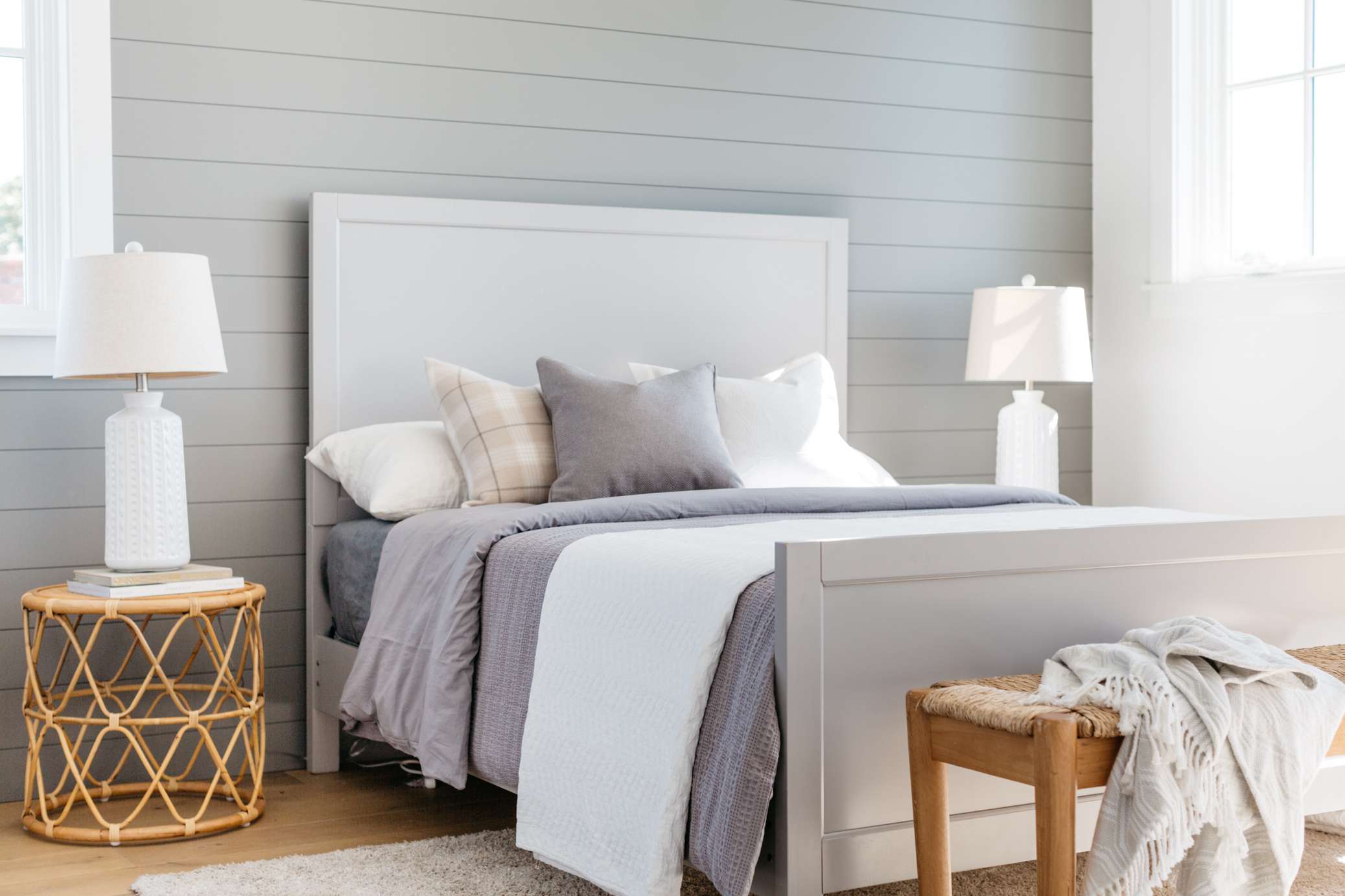
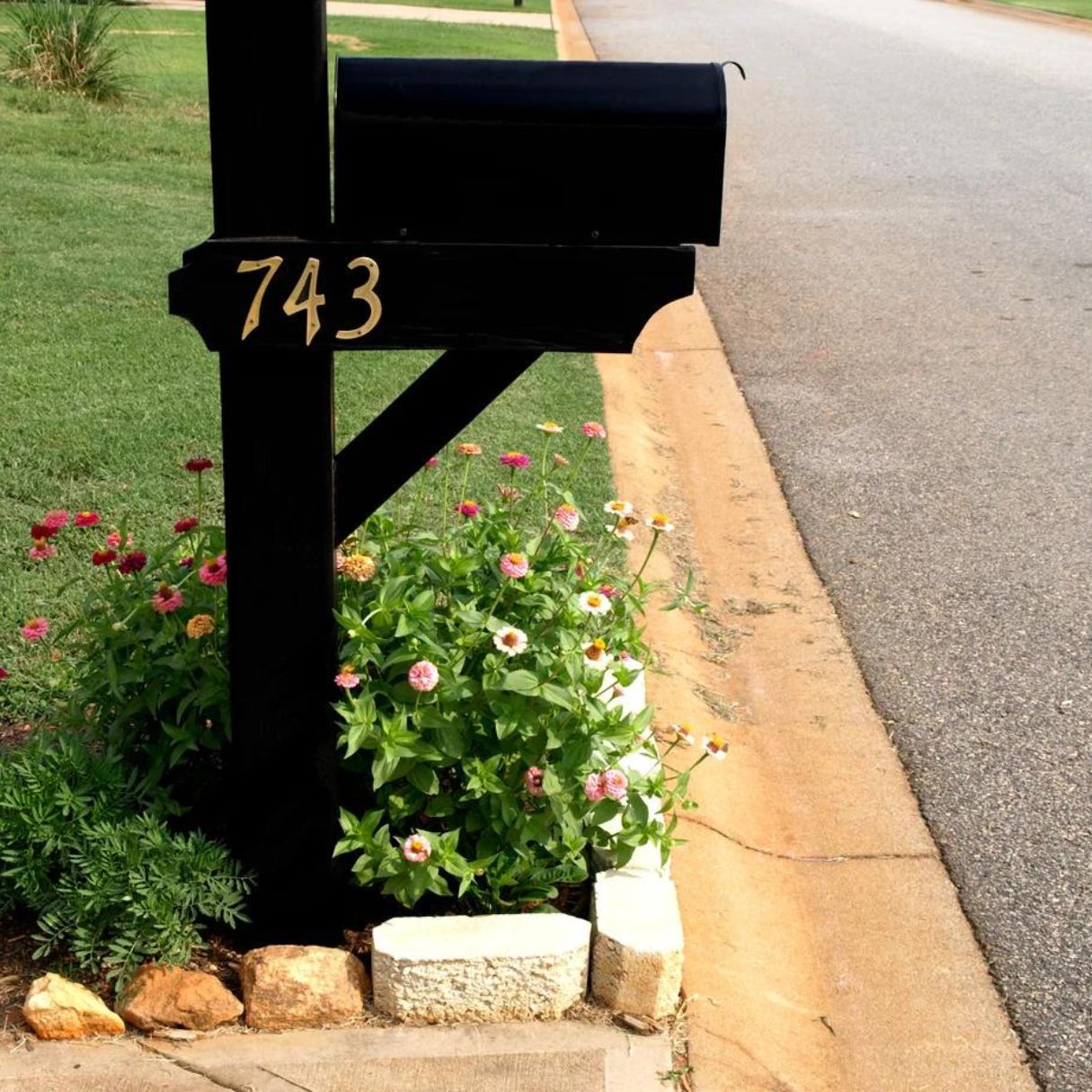

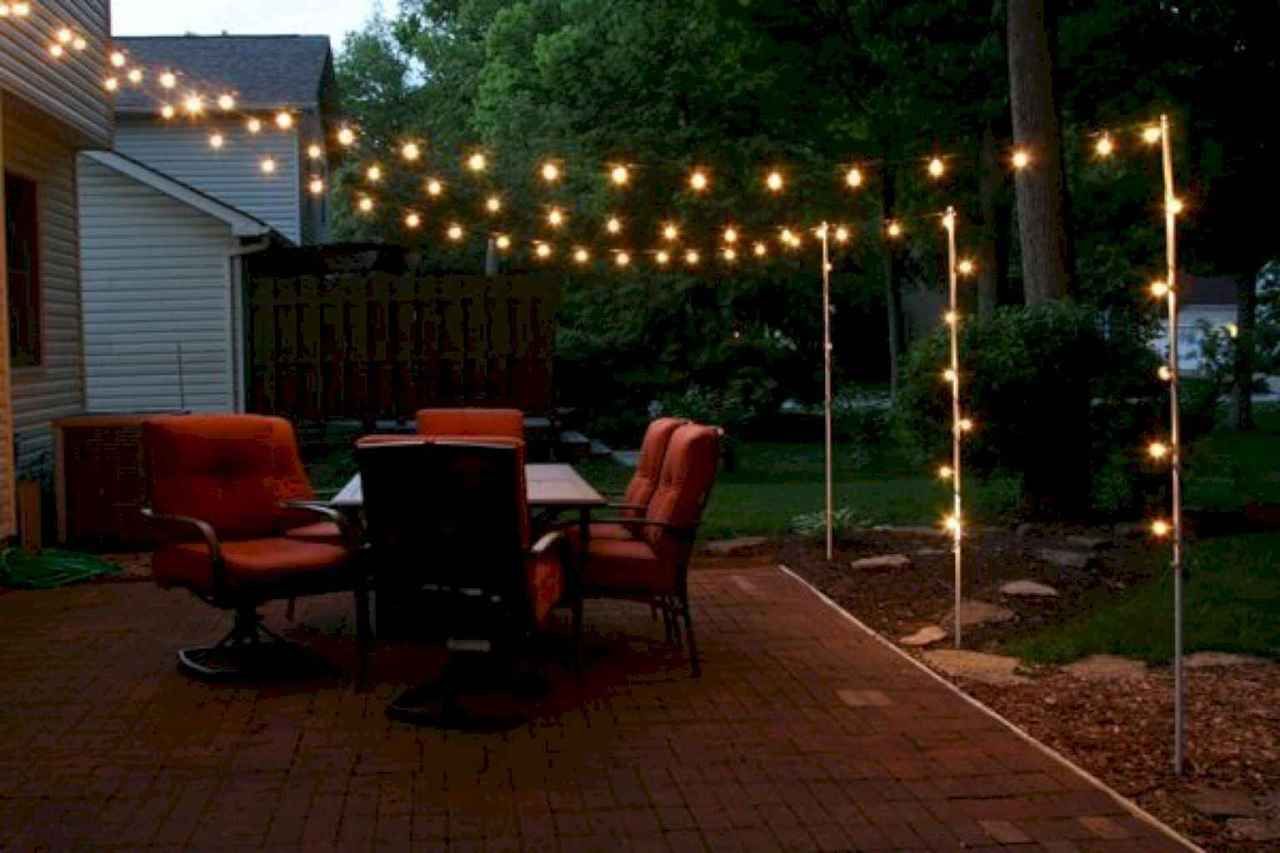
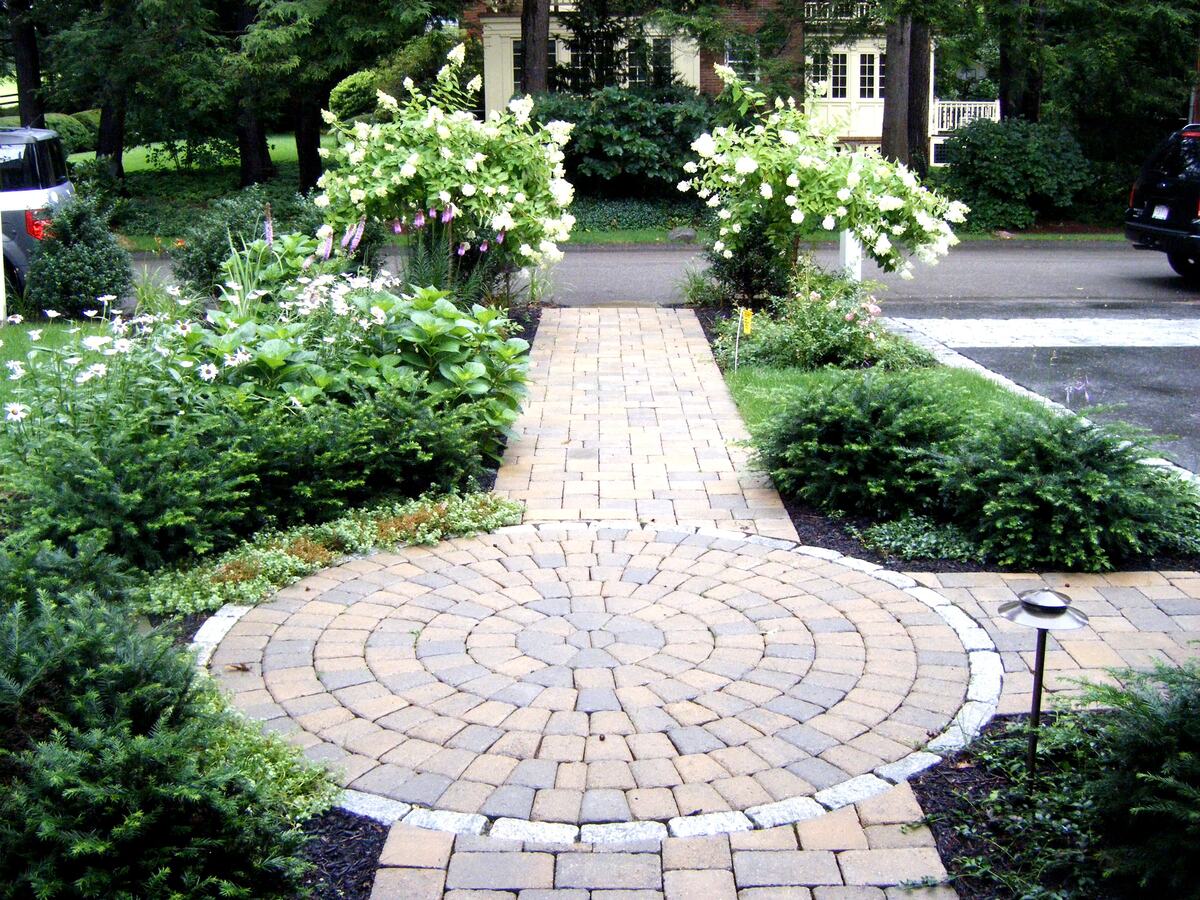

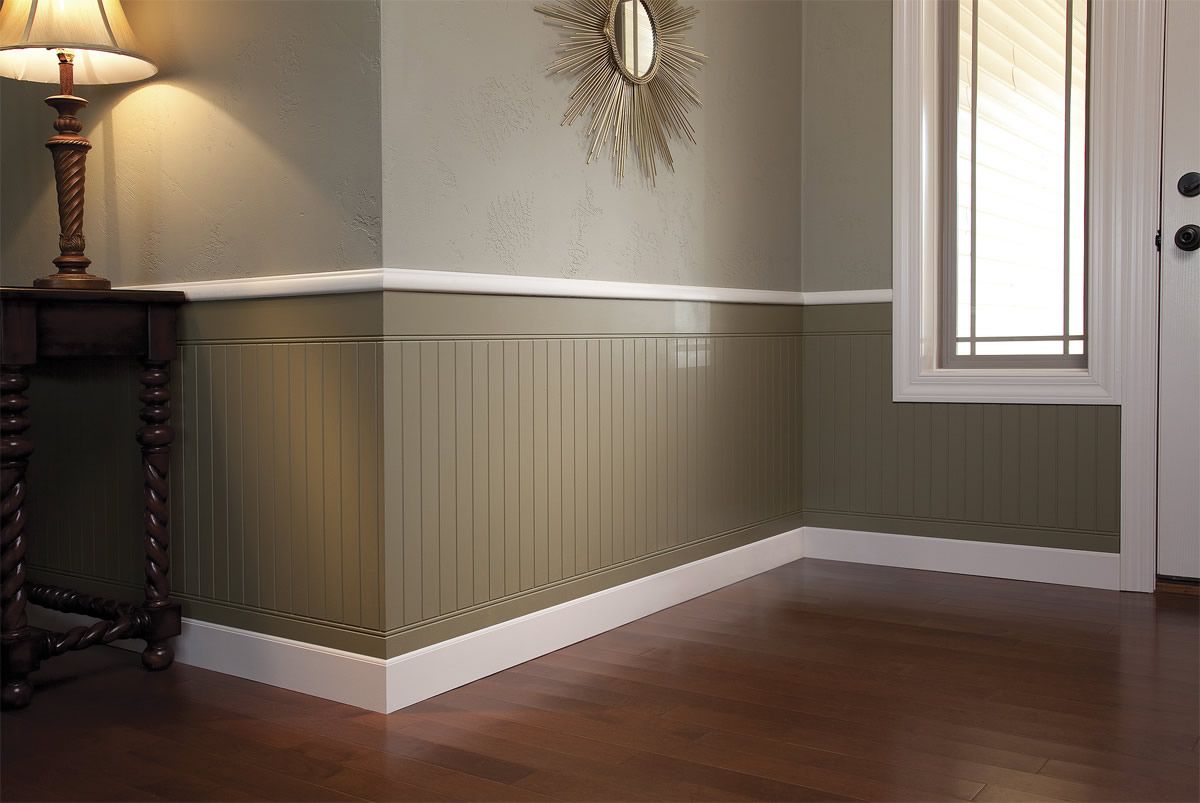


0 thoughts on “Front Yard Flower Bed Ideas: 15 Low-maintenance Ways To Add Florals”